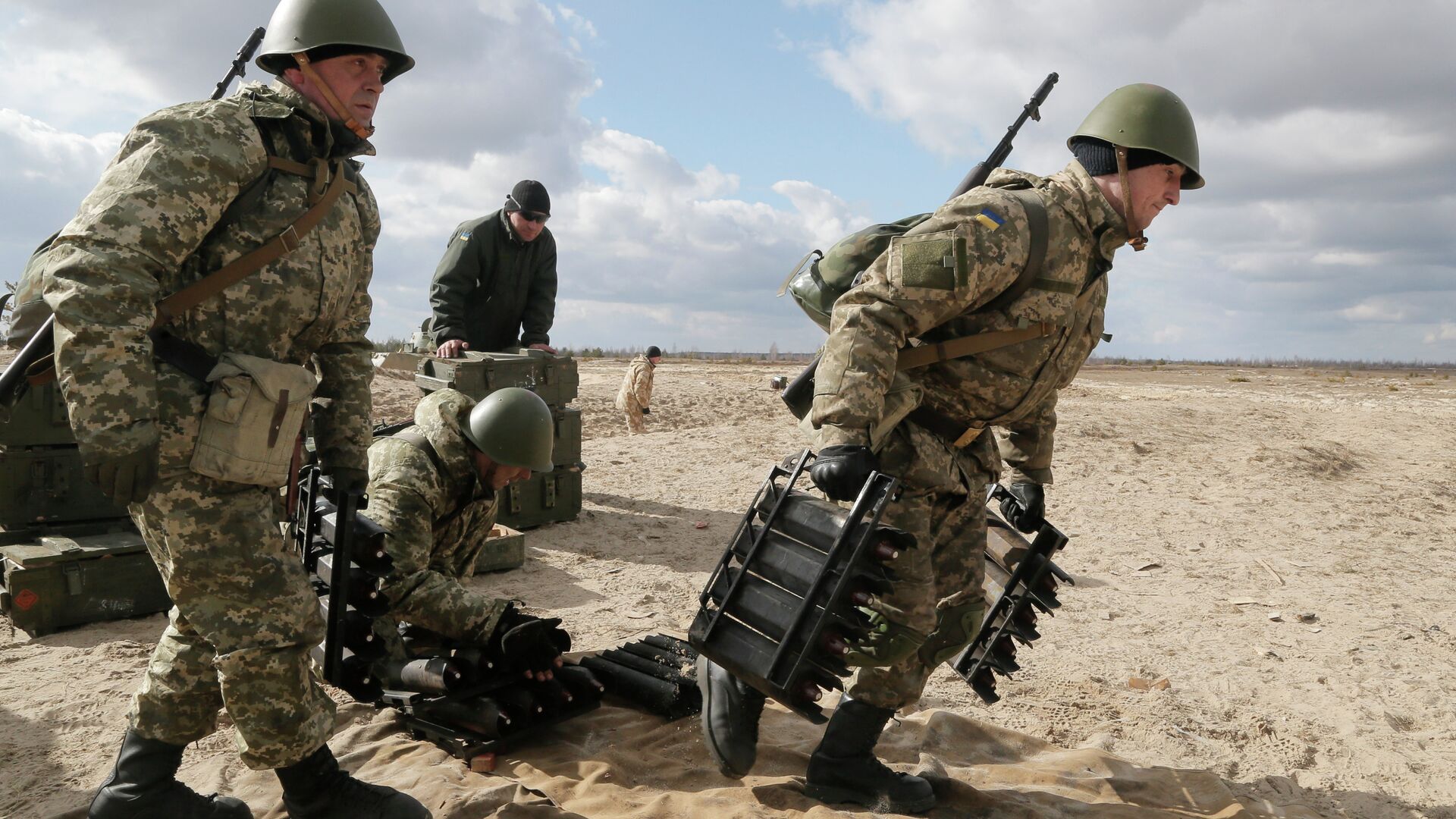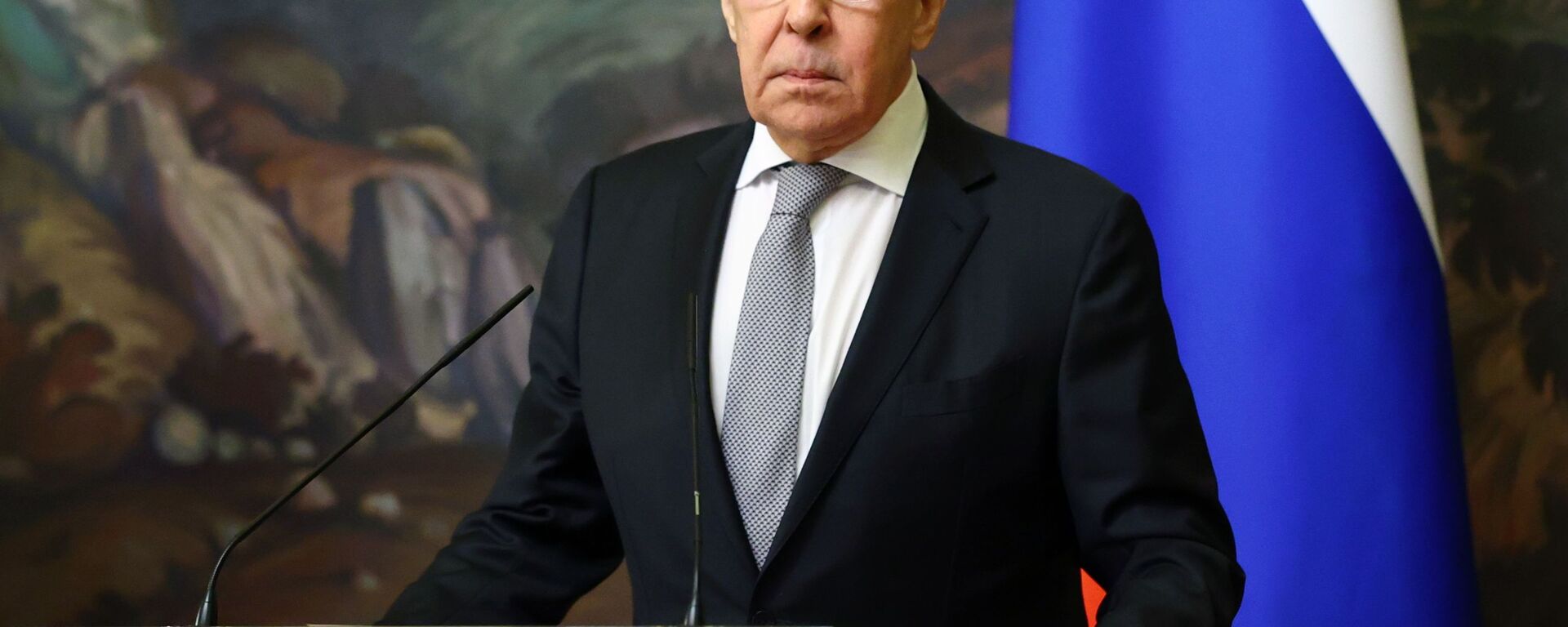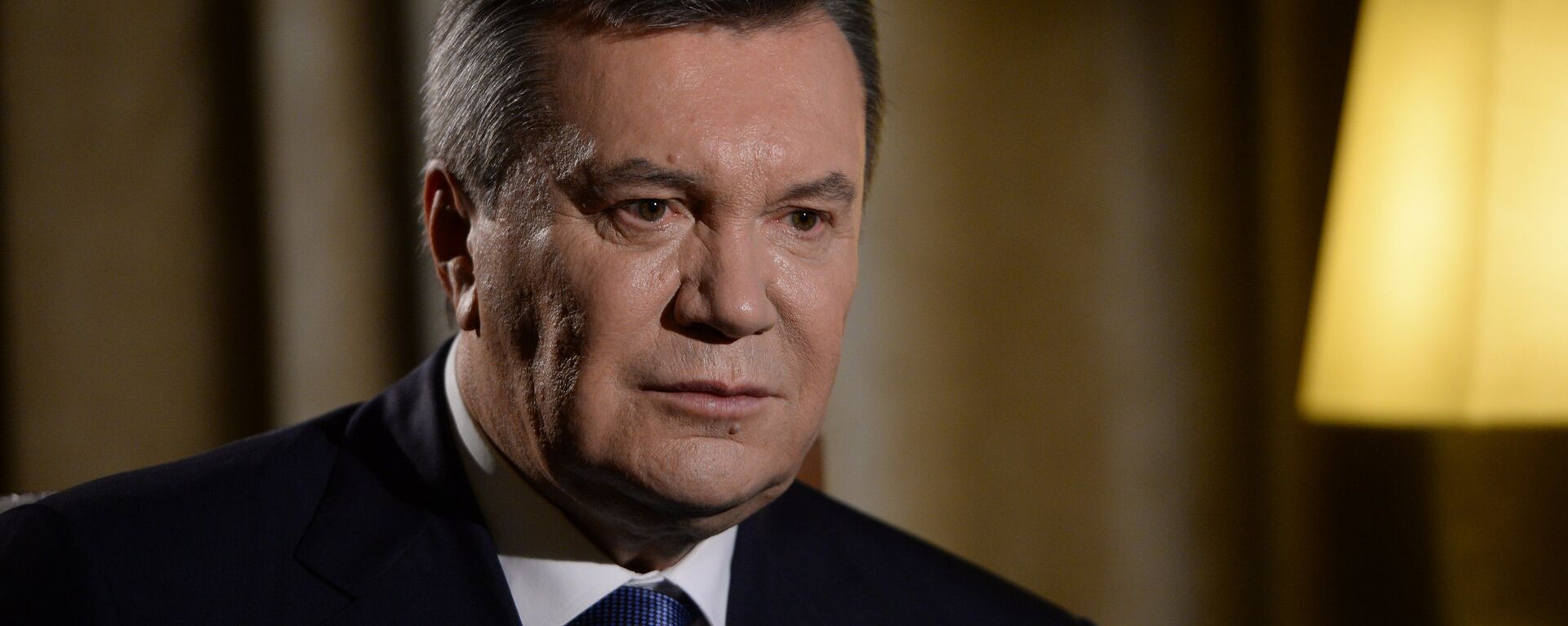https://sputnikglobe.com/20221208/the-minsk-agreements-explained-1105193250.html
The Minsk Agreements Explained
The Minsk Agreements Explained
Sputnik International
Signed in the 2014 and 2015 by representatives of Ukraine, the Donetsk and Lugansk People's Republics, Russia, France and Germany, the Minsk Agreements failed to bring a peaceful resolution to the conflict in Donbass.
2022-12-08T19:04+0000
2022-12-08T19:04+0000
2022-12-08T19:04+0000
sputnik explains
ukraine
donbass
minsk agreements
vladimir putin
petro poroshenko
volodymyr zelensky
special operation
minsk accords
minsk protocol
https://cdn1.img.sputnikglobe.com/img/101991/78/1019917848_0:351:4545:2907_1920x0_80_0_0_66ac48dd79a8a441963cbb5c4492b01b.jpg
Speaking at a meeting of the Council for the Development of Civil Society and Human Rights on Wednesday, Russian President Vladimir Putin, mentioned the issue of the 2014 Minsk Peace Agreements.The Russian president said that western politicians prefer to remain tight-lipped when he reminds them of the accords, which were supposed to pave way for the peaceful resolution of the conflict in Ukraine but ultimately failed to do so.So what exactly were these agreements about and what prompted the parties involved to sign them?What Were the Minsk Agreements? In February 2014, the democratically elected government of Ukraine was toppled by the so-called Euromaidan coup backed by western powers. The coup sparked a bloody conflict in the country's eastern regions where people who refused to bow down to the new Kiev leadership formed the Donetsk and Lugansk People's Republics (DPR and LPR, respectively) and proclaimed their independence.Attempts by Kiev to quickly bring the newly formed republics to heel via the use of military power failed. The hastily formed DPR and LPR militias, armed with whatever weaponry they could scrounge from local armories, managed to hold their ground against the onslaught of the forces loyal to the new Ukrainian government.Having failed to secure a decisive victory on the battlefield and with Russia and the European powers calling for a peaceful solution to the conflict, Kiev resorted to negotiations, which were hampered by the fact that the Ukrainian government was reluctant to talk directly with the leaders of the DPR and LPR.Amid this delicate and precarious situation, the newly formed Trilateral Contact Group on Ukraine comprised of Ukraine, Russia, the Organization for Security and Cooperation in Europe (OSCE) and the Normandy Format comprised of Ukraine, Russia, Germany and France managed to work out what became known as the Minsk Agreements. They were named so because the talks were being held in the Belarussian capital of Minsk that served as a neutral ground.The first of these accords, the Minsk Protocol, was signed on September 5, 2014, with an updated version of it, known commonly as the Minsk-2 Accords, being signed on February 12, 2015, when the previous iteration of the agreement failed to bring an end to the fighting.The documents are in full known as “the Protocol on the results of consultations of the three-member Contact Group on joint steps aimed at the implementation of the peace plan by Ukrainian President Petro Poroshenko and the initiatives by Russian President Vladimir Putin.” Poroshenko became the president of Ukraine following the overthrow of Yanukovich during the Maidan coup.What Did the Minsk Agreements Say?Under the auspices of the agreements:Who Signed the Minsk Agreements?The Minsk Protocol was signed by the members of the contact group, as well as the heads of the Donetsk and Lugansk People’s Republics.On February 12, 2015, a 13-point spate of measures on the implementation of the Minsk Agreements (the so-called Minsk-2 accords) was signed, and, on the whole, the document coincided with the September protocol in terms of content.On behalf of the OSCE, the Minsk Agreements were signed by the OSCE’s Ukraine special envoy Heidi Tagliavini, while on the part of Ukraine and Russia, the document was inked by former Ukrainian President Leonid Kuchma and then-Russian Ambassador to Kiev Mikhail Zurabov, respectively.The Minsk Protocol was also signed by Alexander Zakharchenko, then-head of the DPR, and his LPR counterpart at the time Igor Plotnitsky.The Minsk-2 agreement was clinched during a meeting of the Normandy Format, which included Russian President Vladimir Putin, then-German Chancellor Angela Merkel, then-French President Francois Hollande and then-Ukrainian President Petro Poroshenko.Who Violated the Minsk Agreements? Over the past five years, the Ukrainian side simply refrained from implementing political clauses of the Minsk Agreements, demanding instead that the control of the border between the DPR and LPR territories should be handed over to Kiev first.These demands, however, were rejected by DPR and LPR authorities and by Moscow, who suspected that once Ukrainian forces got control of the border and effectively cut off the republics from the outside world, Kiev may then attempt to crush all opposition there through the force of arms.The DPR and the LPR authorities, as well as Russia, have also repeatedly accused Kiev of illegally occupying settlements in the buffer zone and deploying heavy military equipment there.The situation was further exacerbated by the fact that the European powers repeatedly turned a blind eye to Kiev's blatant refusal to adhere to the Minsk agreements, while at the same time constantly berating the DPR and LPR for the alleged violations of the very same accords.On Wednesday, Russian Foreign Minister Sergey Lavrov recalled that both Ukrainian President Volodymyr Zelensky and his predecessor Petro Poroshenko openly said that they were not going to implement the Minsk Accords.The remarks came after Russian President Vladimir Putin condemned Ukrainian authorities for effectively killing the Minsk Agreements, stating in late February that the document stopped existing long before Russia decided to recognize the DPR and the LPR.Putin signed a decree to recognize the Donbass republics – which later became a part of Russia - as independent states on February 21, 2022, in a move that came amid escalating shelling, sniper and sabotage attacks against the LPR and the DPR. The decree was followed by the Russian president announcing the beginning of a special military operation in Ukraine on February 24.
https://sputnikglobe.com/20210428/lavrov-warns-reversing-minsk-agreements-could-lead-to-massacre-in-donbass-1082747408.html
https://sputnikglobe.com/20220314/kiev-washington-responsible-for-failure-of-minsk-peace-agreements-ukraines-former-president-says-1093866063.html
https://sputnikglobe.com/20220222/russian-recognition-of-dpr-and-lpr-brings-no-changes-to-minsk-agreements-envoy-to-un-nebenzya-says-1093257549.html
ukraine
donbass
minsk
Sputnik International
feedback@sputniknews.com
+74956456601
MIA „Rosiya Segodnya“
2022
Oleg Burunov
https://cdn1.img.sputnikglobe.com/img/07e4/09/0b/1080424846_0:0:2048:2048_100x100_80_0_0_3d7b461f8a98586fa3fe739930816aea.jpg
Oleg Burunov
https://cdn1.img.sputnikglobe.com/img/07e4/09/0b/1080424846_0:0:2048:2048_100x100_80_0_0_3d7b461f8a98586fa3fe739930816aea.jpg
News
en_EN
Sputnik International
feedback@sputniknews.com
+74956456601
MIA „Rosiya Segodnya“
Sputnik International
feedback@sputniknews.com
+74956456601
MIA „Rosiya Segodnya“
Oleg Burunov
https://cdn1.img.sputnikglobe.com/img/07e4/09/0b/1080424846_0:0:2048:2048_100x100_80_0_0_3d7b461f8a98586fa3fe739930816aea.jpg
minsk peace agreements, trilateral contact group, russian special military operation in ukraine, minsk protocol. armed conflict in eastern ukraine, dpr and lpr were recognized by russia
minsk peace agreements, trilateral contact group, russian special military operation in ukraine, minsk protocol. armed conflict in eastern ukraine, dpr and lpr were recognized by russia
The Minsk Agreements Explained
Signed in 2014 and 2015 by representatives of Ukraine, the Donetsk and Lugansk People's Republics, Russia, France and Germany, the Minsk Agreements failed to bring a peaceful resolution to the conflict in Donbass.
Speaking at a meeting of the Council for the Development of Civil Society and Human Rights on Wednesday, Russian President Vladimir Putin, mentioned the issue of the 2014 Minsk Peace Agreements.
The Russian president said that western politicians prefer to remain tight-lipped when he reminds them of the accords, which were supposed to pave way for the peaceful resolution of the conflict in Ukraine but ultimately failed to do so.
So what exactly were these agreements about and what prompted the parties involved to sign them?
What Were the Minsk Agreements?
In February 2014, the democratically elected government of Ukraine was toppled by the so-called Euromaidan coup backed by western powers. The coup sparked a bloody conflict in the country's eastern regions where people who refused to bow down to the new Kiev leadership formed the Donetsk and Lugansk People's Republics (DPR and LPR, respectively) and proclaimed their independence.
Attempts by Kiev to quickly bring the newly formed republics to heel via the use of military power failed. The hastily formed DPR and LPR militias, armed with whatever weaponry they could scrounge from local armories, managed to hold their ground against the onslaught of the forces loyal to the new Ukrainian government.
Having failed to secure a decisive victory on the battlefield and with Russia and the European powers calling for a peaceful solution to the conflict, Kiev resorted to negotiations, which were hampered by the fact that the Ukrainian government was reluctant to talk directly with the leaders of the DPR and LPR.
Amid this delicate and precarious situation, the newly formed Trilateral Contact Group on Ukraine comprised of Ukraine, Russia, the Organization for Security and Cooperation in Europe (OSCE) and the Normandy Format comprised of Ukraine, Russia, Germany and France managed to work out what became known as the Minsk Agreements. They were named so because the talks were being held in the Belarussian capital of Minsk that served as a neutral ground.
The first of these accords, the Minsk Protocol, was signed on September 5, 2014, with an updated version of it, known commonly as the Minsk-2 Accords, being signed on February 12, 2015, when the previous iteration of the agreement failed to bring an end to the fighting.
The documents are in full known as “the Protocol on the results of consultations of the three-member Contact Group on joint steps aimed at the implementation of the peace plan by Ukrainian President Petro Poroshenko and the initiatives by Russian President Vladimir Putin.” Poroshenko became the president of Ukraine following the overthrow of Yanukovich during the Maidan coup.
What Did the Minsk Agreements Say?
Under the auspices of the agreements:
The parties pledged to a ceasefire and withdraw their forces from the line of contact.
The presence of heavy weapons in the area of the buffer zone was strictly prohibited.
The multiple-launch rocket systems Uragan and Smerch as well as
the Tochka short-range ballistic missile system were supposed to be pulled out 70 km away from the line of contact.
OSCE observers were due to monitor the implementation of these rules.
In addition to the exchange of prisoners in line with the "all-for-all" principle, the sides were obliged to carry out the amnesty of those captured during the armed clashes.
The Ukrainian side was also supposed to adopt the law on the special status of separate DPR and LPR districts and hold local elections there, taking into account the position of the representatives of both
Donbass republics. The day after the elections, Ukraine was set to take full control of the state border.
Additionally, the Minsk Protocols stipulated the implementation of a reform in Ukraine, which envisaged the introduction of a concept of decentralization into the country’s Constitution that should have taken into account the specifics of “certain districts of the Donetsk and Lugansk regions."
Who Signed the Minsk Agreements?
The Minsk Protocol was signed by the members of the contact group, as well as the heads of the Donetsk and
Lugansk People’s Republics.
On February 12, 2015, a 13-point spate of measures on the implementation of the Minsk Agreements (the so-called Minsk-2 accords) was signed, and, on the whole, the document coincided with the September protocol in terms of content.
On behalf of the OSCE, the Minsk Agreements were signed by the OSCE’s Ukraine special envoy Heidi Tagliavini, while on the part of Ukraine and Russia, the document was inked by former Ukrainian President Leonid Kuchma and then-Russian Ambassador to Kiev Mikhail Zurabov, respectively.
The Minsk Protocol was also signed by Alexander Zakharchenko, then-head of the DPR, and his LPR counterpart at the time Igor Plotnitsky.
The Minsk-2 agreement was clinched during a meeting of the Normandy Format, which included
Russian President Vladimir Putin, then-German Chancellor Angela Merkel, then-French President Francois Hollande and then-Ukrainian President Petro Poroshenko.
Who Violated the Minsk Agreements?
Over the past five years, the Ukrainian side simply refrained from implementing political clauses of the Minsk Agreements, demanding instead that the control of the border between the DPR and LPR territories should be handed over to Kiev first.
These demands, however, were rejected by DPR and LPR authorities and by Moscow, who suspected that once Ukrainian forces got control of the border and effectively cut off the republics from the outside world, Kiev may then attempt to crush all opposition there through the force of arms.
The DPR and the LPR authorities, as well as Russia, have also repeatedly accused Kiev of illegally occupying settlements in the buffer zone and deploying heavy military equipment there.
The situation was further exacerbated by the fact that the European powers repeatedly turned a blind eye to Kiev's blatant refusal to adhere to the Minsk agreements, while at the same time constantly berating the DPR and LPR for the alleged violations of the very same accords.

22 February 2022, 05:56 GMT
On Wednesday, Russian Foreign Minister Sergey Lavrov recalled that both Ukrainian President Volodymyr Zelensky and his predecessor
Petro Poroshenko openly said that they were not going to implement the Minsk Accords.
The remarks came after Russian President Vladimir Putin condemned Ukrainian authorities for effectively killing the Minsk Agreements, stating in late February that the document stopped existing long before Russia decided to recognize the DPR and the LPR.
Putin signed a decree to recognize the Donbass republics – which later became a part of Russia - as independent states on February 21, 2022, in a move that came amid escalating shelling, sniper and sabotage attacks against the LPR and the DPR. The decree was followed by the Russian president announcing the beginning of
a special military operation in Ukraine on February 24.







